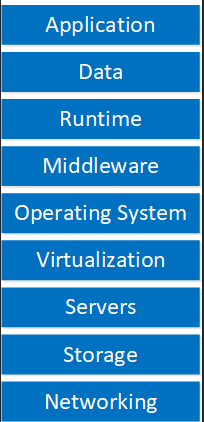This topic is to discuss the following lesson:
Hello Rene congratulations for this great article!
Just one advice, I believe that these key terms needs to be corrected
on more then one place:
Infrastructure as a Service (SaaS)
Platform as a Service (PaaS)
Software as a Service (IaaS)
Thanks Ronie, I just fixed this. I moved the headings but forgot to change the acronyms.
Rene
You are welcome Rene, cheers !
Can you be more detailed with usages and real life scenarios using PaaS?
Hello Joshua
PaaS is a set of tools used to help build and deploy customized software applications that run in the cloud. When a company wants to develop an app, or a web platform, or a software package, it is able to use a PaaS platform that will automate many of the previously manual steps. PaaS allows you to take components or preconfigured building blocks (often in a GUI environment) and put them together to create your own application. This automation reduces the time to market dramatically as you don’t have to recreate components that already exist. The PaaS platform allows you to fully test your application, as well as deliver it to your users/customers. The benefits of using PaaS includeL
- Faster time to market
- lower cost and lower capital commitment
- multiple applications can be managed centrally and more simply
- more responsive, meaning automated deployment allows you to deploy changes faster, and automate scaling on demand
An excellent example is Google App Engine (GAE) from which you can build web and mobile applications with many preconfigured and prepackaged components. You can sandbox your applications (run them and test them in a safe and isolated environment) and then publish them. As demand increases, resources (cpu, memory, storage) are automatically and dynamically increased to compensate for what is needed. Below a certain level of resources, the GAE is free, after which you begin to pay based on the resources required.
Hopefully this will give you a clearer understanding of the usage of PaaS. I suggest you also do a web search for PaaS use cases or case studies where you can see practical real-life application scenarios.
I hope this has been helpful!
Laz
It is helpful, thank you!
Hello Laz/Rene,
can you please give us little explanation for middleware and runtime?
Thanks,
Ajay M
Hello Ajay
When we talk about services running on systems of any kind (servers, cloud, or whatever else…) these systems are broken down into the following components:
The varying cloud service models essentially define which of these components are delivered by the platform.
Middleware, according to the Google dictionary is defined as:
software that acts as a bridge between an operating system or database and applications, especially on a network.
Wikipedia includes a detailed description of an example of middleware:
The Android operating system uses the Linux kernel at its core, and also provides an application framework that developers incorporate into their applications. In addition, Android provides a middleware layer including libraries that provide services such as data storage, screen display, multimedia, and web browsing. Because the middleware libraries are compiled to machine language, services execute quickly. Middleware libraries also implement device-specific functions, so applications and the application framework need not concern themselves with variations between various Android devices. Android’s middleware layer also contains the ART virtual machine and its core Java application libraries.
Runtime is a term used to refer to the period of time during which a computer program is executing. In this context, cloud platforms that are responsible for runtime are responsible for providing the compute resources and memory to run the application. In other words, the application in question is running on CPU and memory provided by the cloud services provider.
I hope this has been helpful!
Laz
